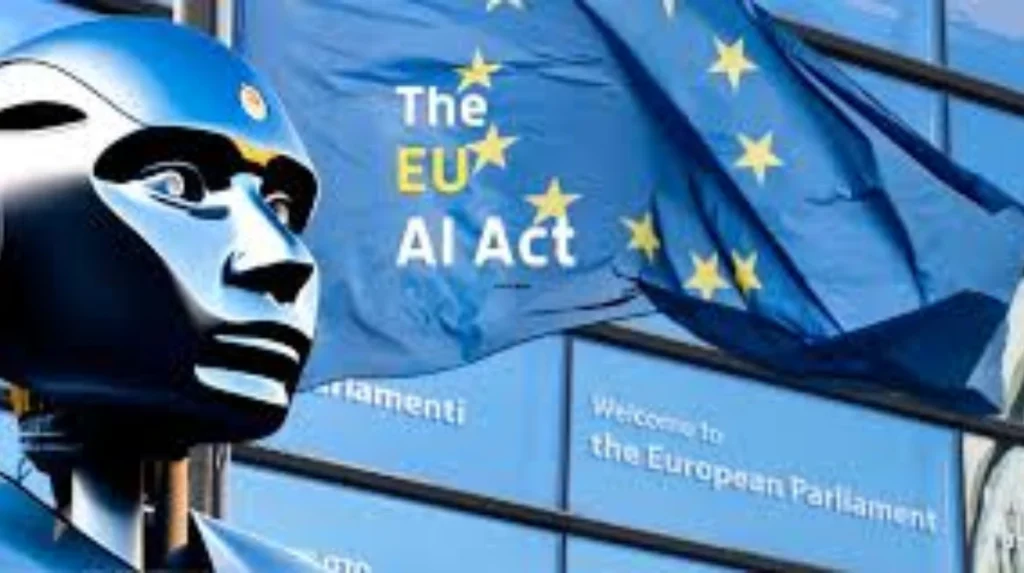The European Union’s Artificial Intelligence Act (EU AI Act), effective since August 1, 2024, represents one of the most comprehensive and pioneering pieces of legislation globally aimed at regulating AI technologies. Designed to create a consistent legal framework across EU member states, the Act seeks to ensure the safe and ethical development, deployment, and use of artificial intelligence while protecting fundamental rights and promoting innovation.
Introduction to the EU AI Act
As artificial intelligence increasingly permeates everyday life and critical sectors such as healthcare, transportation, justice, and public safety, regulatory oversight has become essential. The EU AI Act fills the gap by introducing rules that apply to all AI systems placed on the EU market or used within the Union, regardless of where the provider is based extending its reach extraterritorially.
The Act is product-centric, focusing on the responsibilities of AI system providers and users in professional contexts rather than conferring individual rights. Its objective is to foster trustworthy AI systems that safeguard safety, fundamental rights, transparency, and human oversight across diverse applications.
Scope and Applicability
The EU AI Act broadly covers any software system developed with techniques such as machine learning, logic- and knowledge-based approaches, and statistical methods that can generate outputs resembling human intelligence. However, it explicitly excludes AI systems developed or used solely for military or national security purposes, as well as those for purely scientific research or non-professional use.
This extensive coverage makes the EU AI Act the first of its kind to unify rules for AI across sectors including healthcare, education, employment, transport, law enforcement, migration, and access to public benefits.
Risk-Based Classification of AI Systems
The cornerstone of the EU AI Act is its risk-based classification, which categorizes AI systems according to their potential to cause harm. This approach allows tailored regulation that is proportional to risks while fostering innovation in low-risk applications.
Unacceptable Risk AI Systems
AI applications considered to pose unacceptable risks are banned, except under specific exemptions. These include:
- AI systems that manipulate human behavior, causing physical or psychological harm.
- Real-time remote biometric identification systems in publicly accessible spaces (such as facial recognition), except for strictly limited law enforcement uses.
- AI systems used for social scoring by public or private actors that rank individuals based on personal characteristics, socioeconomic status, or behavior.
Banning these applications aims to prevent intrusive surveillance, social discrimination, and manipulation that can undermine democratic and human rights values.
High-Risk AI Systems
High-risk AI systems are those that have significant implications for the health, safety, or fundamental rights of individuals. Examples include AI used in:
- Critical infrastructure management (e.g., energy, transport)
- Healthcare devices and medical diagnostics
- Recruitment and employment decisions
- Access to essential private and public services such as credit scoring or social benefits
- Law enforcement activities and migration management
- Judicial decision support systems
Providers of high-risk AI systems must comply with stringent obligations, including quality management, risk assessment, transparency, human oversight, robustness, and security. These systems undergo conformity assessments before market entry and continuously throughout their lifecycle to ensure ongoing compliance.
Limited-Risk AI Systems
Systems labeled limited-risk have transparency obligations to ensure users know they are interacting with AI but do not impose invasive requirements. Examples include applications that generate or manipulate content such as deepfake images or videos, which must inform users about their AI-generated nature to prevent deception.
Minimal-Risk AI Systems
Most AI applications fall into this category, including video games or basic spam filters. These are subject to minimal regulation, with member states barred from imposing additional rules to maintain market harmonization. Providers and users of such systems may choose to follow voluntary codes of conduct.
General-Purpose AI
Introduced as a specific category in 2023, general-purpose AI models like large language models (e.g., ChatGPT) or foundational models that can perform a wide range of tasks are subject to special transparency requirements. Providers must maintain up-to-date technical documentation and disclose training data summaries along with copyright compliance strategies. These models may face additional compliance if classified as high-risk based on usage.
Governance and Enforcement Framework
To oversee implementation and enforcement, the EU AI Act establishes several new bodies and mandates cooperation between EU institutions and member states:
- AI Office: A European Commission-attached body coordinating the regulation’s application, especially overseeing general-purpose AI providers.
- European Artificial Intelligence Board: Composed of representatives from each member state, this board facilitates consistent policy application, provides recommendations, and shares expertise.
- Advisory Forum: Inclusive of diverse stakeholders (industry, academia, civil society), it provides technical and ethical guidance.
- Scientific Panel of Independent Experts: Offers cutting-edge scientific advice and monitors risks associated with evolving AI technologies.
Member states are responsible for designating national competent authorities to conduct market surveillance, carry out conformity assessments, and enforce penalties for non-compliance.
Conformity assessments are essential pre-market obligations ensuring high-risk AI systems meet legal and technical standards. These can be self-assessed or performed by third-party notified bodies, with ongoing audits enhancing product safety throughout AI system lifecycles.
Transparency, Human Oversight, and Consumer Protection
Transparency rules empower users by requiring clear notification when interacting with AI, especially for limited-risk and general-purpose systems. Users must understand the nature of AI’s role, supporting informed choices.
Human oversight provisions require high-risk AI systems to be designed so that human operators can intervene or override automated decisions, ensuring that critical decisions affecting individuals are not fully delegated to machines.
Consumer protection is reinforced by requiring detailed risk assessments, documentation, and quality management from providers, alongside access to effective complaint mechanisms with national authorities.
Legislative Evolution and Industry Impact
The EU AI Act was proposed by the European Commission in April 2021, passed by the European Parliament in March 2024, and approved by the Council in May 2024. It began applying from August 2024, with staggered enforcement timelines progressively addressing AI categories, culminating in full application by August 2026 for most provisions.
While the Act establishes the EU as a global AI regulation leader, it has prompted mixed reactions:
- Industry generally appreciates clearer legal frameworks transitioning AI development from uncertainty to compliance.
- Critics argue that certain elements, such as partial exemptions for social scoring and minimal third-party assessments for some high-risk systems, may allow loopholes.
- Civil society groups call for stronger bans on biometric surveillance and concerns over possible social control uses.
- Experts emphasize the need for continuous updates as AI technologies evolve to capture secondary model uses and model reusability.
The EU approach contrasts with other jurisdictions by emphasizing human-centric, ethical AI governance alongside innovation incentives.
The EU AI Act regulates artificial intelligence systems across the European Union by establishing a first-of-its-kind, risk-based legal framework. Covering all AI types used commercially or in public sectors, it bans unacceptable-risk applications, imposes strict obligations on high-risk AI, and maintains transparency for lesser-risk systems.
Through coordinated governance bodies, market surveillance, and conformity assessments, the Act provides a clear, harmonized set of rules ensuring AI technologies advance responsibly while protecting fundamental rights, safety, and democratic values.
As AI continues transforming economies and societies, the EU AI Act aims not only to mitigate risks but also to support trustworthy innovation, positioning Europe as a pioneer in ethical and effective AI regulation on the global stage.







